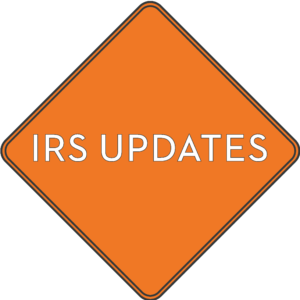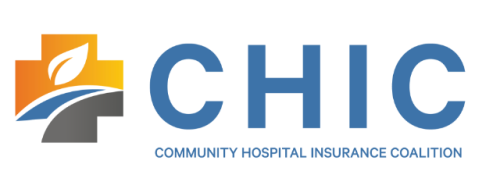Contents
House Committees Release Proposed Legislation to Repeal and Replace the ACA
2017 Federal Poverty Levels and Employer Mandate Penalties Announced
CMS Proposes Rule on PPACA Market Stabilization
IRS to Continue Accepting Tax Returns without Indication of Health Insurance
IRS Updates Publication 969 Addressing HSAs, HRAs and Health FSAs
IRS Releases 2016 Versions of Publications 502 and 503
IRS Extends Period for Furnishing Written QSEHRA Notice to Employees
Did you know? Healthcare Literacy

House Committees Release Proposed Legislation to Repeal and Replace the ACA
On Monday, March 6, the U.S. House of Representatives Ways and Means and Energy and Commerce Committees released the American Health Care Act (AHCA), their proposed legislation to repeal and replace the Affordable Care Act (ACA) through the budget reconciliation process, which requires a simple majority vote of Congress. Key provisions of the bill, if enacted, would:
- retroactively repeal the individual and employer mandate penalties to months after December 31, 2015;
- delay the 40% “Cadillac Tax” on employer-sponsored health plans until 2025 (but would not include a cap on the employer-provided health care tax exclusion, which had been proposed in an earlier leaked draft of the AHCA and which some had expected would replace the Cadillac tax and fund the replacement provisions);
- make significant changes to the ACA insurance coverage and marketplace stabilization provisions;
-
enhance health savings accounts (HSAs) and provide a monthly tax credit;
- provide relief from many of the ACA’s taxes and fees; and
- curtail Medicaid reforms.
2017 Federal Poverty Levels and Employer Mandate Penalties Announced
On Jan. 26, 2017, HHS announced the 2017 federal poverty levels (FPL). The threshold for the 48 contiguous states is $12,060 for a single household and $24,600 for a household of four individuals. The thresholds are different for Alaska ($15,060 and $30,750, respectively) and Hawaii ($13,860 and $28,290, respectively).
The FPL plays an important role under the PPACA. Individuals purchasing coverage through the exchange may qualify for a premium tax credit if their household earnings are within 100 percent to 400 percent of the FPL. Employers wishing to avoid a penalty under the employer mandate may use the FPL affordability safe harbor, which means the cost of an employee’s required contribution for employer sponsored coverage does not exceed 9.69 percent (for 2017) of the single FPL. This means that the FPL affordability safe harbor threshold in the 48 contiguous states for 2017 would be $97.38 per month. As a reminder, the FPL safe harbor is only one of the affordability safe harbors; the other two are the rate of pay and Form W-2 methods.
Additionally, the IRS has recently updated their website to include the 2017 employer mandate penalty amounts. If an employer fails to offer minimum essential coverage to 95 percent or more of its full-time employees, the Penalty A amount for 2017 is $2,260 (up from $2,160 in 2016) times each full-time employee (minus the first 30 employees). If an employer fails to offer affordable coverage meeting minimum value, the Penalty B amount for 2017 is $3,390 (up from $3,240 in 2016) times each full-time employee receiving a premium tax credit.
2017 FPL Announcement
2017 Employer Mandate Penalty Amounts (Question 54)
CMS Proposes Rule on PPACA Market Stabilization
On Feb. 15, 2017, CMS issued a proposed rule for 2018, which proposes new reforms to assist with the stabilization of the individual and small group health insurance markets.
The goal is to help protect patients participating in the individual and small group health insurance markets while future reforms are being employed. Ultimately, the hope is that this will provide more flexibility to states and insurers, and give patients access to more coverage options. That said, the proposed rule would make changes to certain exchange standards, such as special enrollment periods, the timing of the annual open enrollment period, guaranteed availability, network adequacy rules, essential community providers, the actuarial value requirements and the qualified health plan (QHP) certification timeline.
Specifically, the rule proposes a variety of policy and operational changes to stabilize the exchanges, including:
- Special Enrollment Period Pre-Enrollment Verification: Starting in June 2017, the rule proposes to expand pre-enrollment verification of eligibility to individuals who newly enroll through special enrollment periods in exchanges using the HealthCare.gov platform. This proposed change would help ensure that special enrollment periods are available to all who are eligible for them, but will require individuals to submit supporting documentation. This will hopefully help place downward pressure on premiums, curb abuse and promote year-round enrollment. This change would be implemented in the federally facilitated and state-based exchanges using the federal platform (HealthCare.gov).
- Open Enrollment Period: For the 2018 coverage year, the proposed rule provides for a shortened open enrollment period of Nov. 1, 2017, to Dec. 15, 2017. The open enrollment period was previously set to be from Nov. 1, 2017, to Jan. 31, 2018, for 2018 coverage. This proposed change will align the exchanges with employer sponsored plans and Medicare (could simplify administration where coordination is required), and help lower prices by reducing adverse selection.
- Guaranteed Availability: The rule proposes to address potential abuses by allowing an issuer to collect premiums for prior unpaid coverage before enrolling a patient in the next year’s plan with the same issuer. This is meant to incentivize patients to avoid coverage lapses. This will not be available to insurers in the federally facilitated SHOP and may not prevent individuals from enrolling in coverage with a different insurer.
- Network Adequacy: The proposed rule focuses on reaffirming the traditional role of states to serve their populations in which a federally facilitated exchange is operating. In the review of QHPs, CMS proposes to defer to the states’ reviews in states with the authority and means to assess issuer network adequacy.
- Determining the Level of Coverage: The rule proposes to make adjustments to the de minimis range used for determining the level of coverage (bronze, silver, gold and platinum) by providing greater flexibility to issuers to provide patients with more coverage options.
- QHP Certification Calendar: In the rule, CMS announces its intention to release a revised proposed timeline for the QHP certification and rate review process for plan year 2018. The revised timeline would provide issuers with additional time to implement proposed changes that are finalized prior to the 2018 coverage year. These changes will give issuers flexibility to incorporate benefit changes and maximize the number of coverage options available to patients.
CMS is accepting comments on the proposed regulations through March 7, 2017. Although this rule mostly affects the exchanges and insurers offering coverage on the exchange, employers should familiarize themselves with the portions of the rule surrounding special enrollment verification and the open enrollment period.
Market Stabilization Proposed Rule

IRS to Continue Accepting Tax Returns without Indication of Health Insurance
by Marathas Barrow Weatherhead Lent LLP
The IRS has announced that it will continue to process tax filings of individuals whose returns do not indicate whether they have maintained health insurance as required under the Affordable Care Act (ACA). The announcement is in direct response to the President’s January executive order to ease the ACA’s economic and regulatory burdens.
In recent years, individuals were instructed to check a box on line 61 of Form 1040 if they had health insurance all year. Those who did not were instructed to attach an exemption form (Form 8965) or make a shared responsibility payment. Some taxpayers did not check the box on line 61 or include an exemption form. These “silent returns” were still processed and individuals could claim any refund to which they were entitled.
Prior to the issuance of the President’s order, the IRS had put in place system changes to reject silent returns starting with those filed for calendar year 2016; however, in furtherance of the President’s order the IRS will continue to process silent returns and provide any refunds due.
The fact that silent returns will not be systematically rejected at the time of filing allows them to be processed and minimizes the burden on taxpayers, including those expecting refunds. That said, taxpayers are still required to make an individual shared responsibility payment, if applicable. The announcement emphasized that the individual mandate is still in effect and subject to enforcement until changed by Congress. If the IRS has questions about a tax return, taxpayers may receive correspondence at a future date or they may experience collection activity.
IRS Updates Publication 969 Addressing HSAs, HRAs and Health FSAs
On Feb. 10, 2017, the IRS released an updated version of Publication 969 for use in preparing 2016 individual federal income tax returns. While there are no major changes to the 2016 version (as compared to the 2015 version), the publication provides a general overview of HSAs, HRAs and health FSAs, including brief descriptions of benefits, eligibility requirements, contribution limits and distribution issues.
Minor changes include the updated 2016 limits for HSA contributions (the single-only contribution limit remained at $3,350, while the family contribution limit increased to $6,750) and the updated annual deductible and out-of-pocket maximums for HSA-qualifying HDHPs. While the deductible limit remains $1,300 for single-only coverage and $2,600 for family coverage, the out-of-pocket maximum limit increased to $6,550 for single-only coverage and $13,100 for family coverage. The publication also reminds employers that for plan years beginning in 2016, salary reduction contributions to a health FSA cannot be more than $2,550 per year. The publication serves as a helpful guide for employers with these types of consumer reimbursement arrangements.
IRS Releases 2016 Versions of Publications 502 and 503
The IRS recently released the updated versions of Publications 502 (Medical and Dental Expenses) and 503 (Child and Dependent Care Expenses).
Publication 502 describes what medical expenses are deductible on taxpayers’ 2016 federal income tax returns. For employers, Publication 502 provides valuable guidance on what expenses might qualify as IRC Section 213(d) medical expenses, which is helpful in identifying expenses that may be reimbursed or paid by a health FSA, HSA, HRA or other employer-sponsored group health plans. However, employers should know that Publication 502 does not include all of the rules for reimbursing expenses under those plans.
Publication 503 describes the requirements relating to the dependent care tax credit (DCTC). It is directed primarily at taxpayers to help determine their eligibility for the credit. Employers should know that the rules relating to the DCTC are different from those relating to employer-sponsored dependent care assistance programs (DCAPs or dependent care FSAs).
The recently released Publications 502 and 503 are substantially similar to the 2015 versions. Regarding Publication 502, information about the health coverage tax credit has been updated. Dollar amounts under both publications have also been updated, where appropriate, to account for inflation (e.g. the standard mileage rate for use of an automobile to obtain medical care).
IRS Publication 502
IRS Publication 503
IRS Extends Period for Furnishing Written QSEHRA Notice to Employees
The IRS recently published Notice 2017-20, which extends the period for employers to provide written notice to employees regarding a qualified small employer health reimbursement arrangement (QSEHRA). As background, late in 2016 Congress enacted the Cures Act, which allows smaller employers (generally speaking, those with fewer than 50 full-time employees/equivalents—those not subject to PPACA’s employer mandate) that do not offer a group health plan to any of its employees to instead offer a QSEHRA.
A QSEHRA is an arrangement whereby the employer pays or reimburses eligible employees for individual health insurance policy premiums incurred by the employee or his or her family members, so long as certain requirements are met. (More information on QSEHRAs can be found in a DOL FAQ, here.) One of those requirements is that the employer must provide a written notice to its eligible employees at least 90 days before the beginning of a year for which the QSEHRA is provided (or, for those that become eligible after the beginning of the plan year, such as a new hire, the date on which the employee is first eligible). So, for a plan year beginning in early 2017 (such as a calendar year plan), the notice requirement may have been difficult to meet. However, according to Notice 2017-20, employers will not be treated as failing to timely furnish this initial written notice if the notice is furnished to employees no later than March 13, 2017 (which is 90 days after the enactment of the Cures Act).
Importantly, the notice must include a description of the maximum amount available for reimbursement under the QSEHRA, a statement that the employee should provide the QSEHRA information to any exchange in which the employee applies for advance payment of the premium tax credit and a statement that the employee may still be subject to the individual mandate penalty (if the employee does not have other MEC). Employers should work with their advisor and/or outside counsel if they are considering offering a QSEHRA as an option.
Notice 2017-20
Becoming health care literate can be complicated. Knowing your benefits and their costs can be a daunting task for anyone.
In fact, being health care literate might be even harder than you think.
- More than 1 in 3 Americans (77 million people) have difficulty with common health tasks, like reading a prescription drug label or making a wise health care decision.
- Low health literacy is estimated to cost the United States $106 billion to $238 billion annually and accounts for 7 to 17 percent of all personal health care expenditures.
Source: U.S. Department of Education’s National Assessment of Adult Literacy (NAAL)



